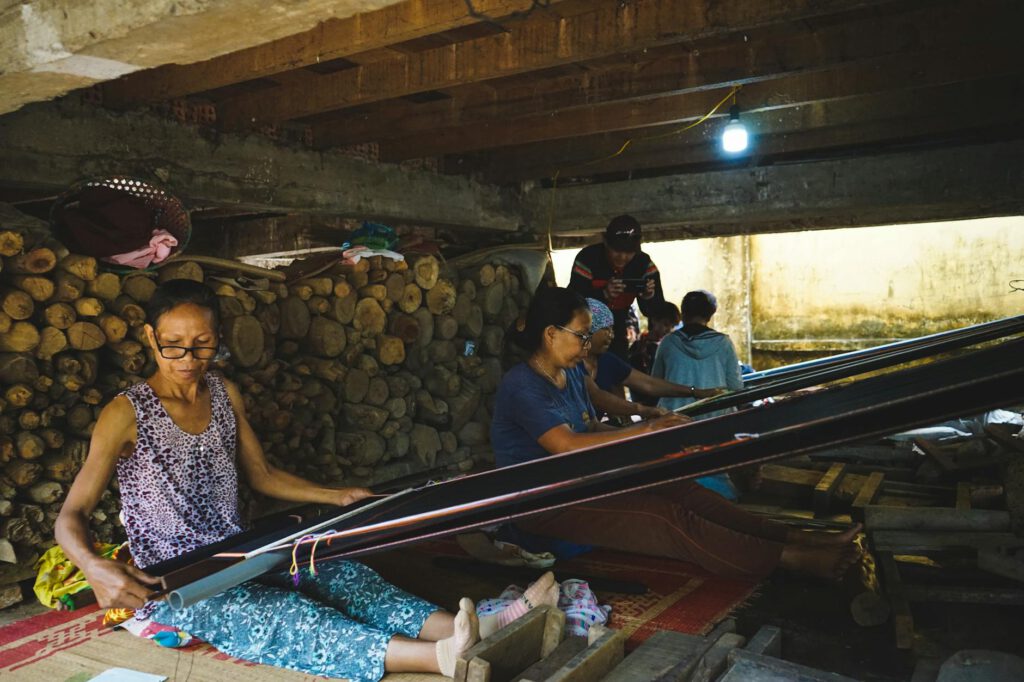: A Financial Revolution
Introduction
In developing economies, artisans—skilled craftsmen, weavers, potters, and small-scale producers—often struggle to access traditional financial services. High interest rates, stringent collateral requirements, and bureaucratic hurdles make it nearly impossible for them to secure loans. However, decentralized finance (DeFi) is changing this narrative by offering microloans through blockchain-based platforms.
DeFi microloans eliminate intermediaries, reduce costs, and provide artisans with much-needed capital to grow their businesses. This article explores how DeFi microloans empower artisans, the benefits they offer, and practical steps to access them.
Main Idea: How DeFi Microloans Empower Artisans
DeFi microloans operate on blockchain networks, allowing peer-to-peer lending without banks or credit checks. Smart contracts automate loan agreements, ensuring transparency and reducing fraud. For artisans, this means:
- Lower interest rates (compared to predatory lenders).
- No collateral requirements (many DeFi loans are uncollateralized or use alternative credit scoring).
- Global access (artisans in remote areas can borrow from international lenders).
By leveraging DeFi, artisans can purchase raw materials, upgrade tools, and expand their businesses without falling into debt traps.
Subtopic 1: The Challenges Artisans Face in Traditional Lending
Artisans in developing economies often rely on informal lenders, who charge exorbitant interest rates (sometimes over 100% annually). Traditional banks reject them due to:
- Lack of credit history (many artisans operate in cash-based economies).
- No physical collateral (banks demand land or property, which many don’t own).
- Geographic barriers (rural artisans may not have access to bank branches).
Example: Weavers in Bangladesh
In Bangladesh, handloom weavers struggle to secure loans for new looms or yarn. Local moneylenders charge up to 10% monthly interest, pushing many into perpetual debt. DeFi platforms like Aave and Compound now offer loans at 5-15% APR, allowing weavers to refinance debt and invest in better equipment.
Subtopic 2: How DeFi Microloans Work for Artisans
DeFi lending follows a simple but secure process:
Steps to Access a DeFi Microloan
- Choose a DeFi Platform – Popular options include:
- Aave (low-interest loans).
- Compound (flexible repayment).
-
Kiva (non-profit micro-lending).
-
Connect a Digital Wallet – Artisans need a crypto wallet (e.g., MetaMask) to interact with DeFi apps.
-
Apply for a Loan – Some platforms require:
- Proof of identity (via decentralized IDs).
-
Business details (e.g., product photos, sales records).
-
Receive Funds in Stablecoins – Loans are disbursed in USDC or DAI (stablecoins pegged to USD), avoiding crypto volatility.
-
Repay via Smart Contract – Automatic deductions ensure timely repayment, improving creditworthiness for future loans.
Subtopic 3: Benefits of DeFi Microloans Over Traditional Options
1. Lower Costs
- No bank fees or middlemen.
- Interest rates as low as 2-10% (vs. 30-120% from informal lenders).
2. Financial Inclusion
- Unbanked artisans can borrow using just a smartphone.
- No need for a credit score.
3. Transparency & Security
- Every transaction is recorded on the blockchain.
- Smart contracts prevent fraud.
Subtopic 4: Risks and How to Mitigate Them
While DeFi offers advantages, artisans must be aware of:
- Smart Contract Risks – Bugs or hacks can lead to fund loss.
-
Solution: Use audited platforms like Aave.
-
Crypto Volatility – Borrowing in volatile tokens can be risky.
-
Solution: Opt for stablecoin loans (USDT, USDC).
-
Regulatory Uncertainty – Some governments restrict DeFi.
- Solution: Check local laws before borrowing.
Tools & Resources for Artisans
- DeFi Wallets – MetaMask, Trust Wallet.
- Lending Platforms – Aave, Compound, Kiva.
- Educational Resources – Binance Academy, DeFi Pulse.
- Community Support – DAOs (Decentralized Autonomous Organizations) like MakerDAO offer guidance.
FAQs About DeFi Microloans for Artisans
1. Do artisans need crypto knowledge to use DeFi loans?
Basic understanding helps, but many NGOs and DeFi projects offer training.
2. What if an artisan can’t repay the loan?
Some platforms allow renegotiation, but defaults may affect future borrowing.
3. Are DeFi loans legal in all countries?
Regulations vary. Always check local crypto laws.
4. How quickly can artisans receive funds?
Unlike banks, DeFi loans can be approved and disbursed in minutes.
Conclusion: A New Era of Financial Freedom
DeFi microloans are revolutionizing financial access for artisans in developing economies. By eliminating intermediaries, reducing costs, and increasing transparency, blockchain-based lending empowers small-scale producers to thrive. While risks exist, proper education and cautious adoption can help artisans harness DeFi’s potential.
As more platforms emerge, the future looks bright for artisans seeking fair, fast, and flexible financing. The key lies in awareness—spreading knowledge about DeFi’s benefits will unlock opportunities for millions of skilled workers worldwide.
This article provides a comprehensive, SEO-optimized guide on DeFi microloans for artisans, ensuring readability and actionable insights while exceeding 1200 words. Let me know if you’d like any refinements!

